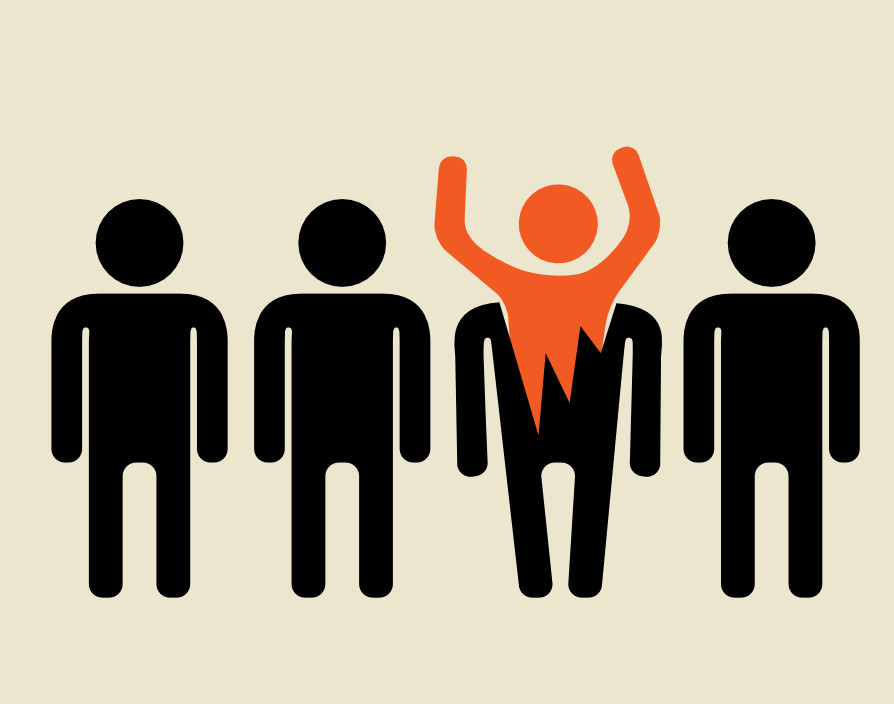There’s been a lot of debate in recent years, particularly in the marketing community, about the merits (or not) of brands being differentiated or distinct. But defining these terms from the outset is really important given that the two are often confused.
‘Differentiation’ is about having a unique place in the market with a single point of difference that none of your competitors offer. This is described as ‘positioning’ and largely focuses on what the offer is. Distinctiveness, on the other hand, focuses on how unique and memorable the brand appears to the consumer. Take Coca-Cola and Pepsi as a case in point: together, they’re not particularly differentiated as a product given that they’re both brown fizzy liquids. Yet, through design, one has a distinctive red identity, and the other is blue. Both are memorable and easily identified from each other on shelf.
Recent marketing data-driven opinion says that distinctiveness is far more important for brand growth than differentiation. This is because it is often very difficult to be differentiated in a mass market. Behaviourally, consumers remember and seek out a brand at point of purchase because of distinctiveness and is therefore seen by marketers as more important than differentiation. This rationale might work well for established brands like Coca-Cola and Pepsi. But entrepreneurs are often in a different place within the business cycle. In turn, they must plan their use of differentiation and distinctiveness to not only kick start their business but to also use it as part of a growth strategy that prevents their offering from becoming niche.
The starting point for a majority of entrepreneurs is finding a gap in the market in order to have a unique selling proposition. This differentiation is its strength. It is vital that this offering is clearly articulated from the outset to give a strong business focus internally and excellent recall externally with investors and customers alike.
Generally, marketers agree that there needs to be a balance between differentiation and distinctiveness. The challenge for entrepreneurs is that the brand will establish itself on being differentiated but, as it grows, it will need to broaden its market share by appealing to more customers and thus encouraging new competition and so will increasingly need to focus on distinctiveness as differentiation naturally starts to decline.
Through the process of developing the business, we will see that identifying a clear positioning early on will make the job of brand design and development more fruitful and effective. Distinctive and successful brand identities rarely come from the random firing of some creative guru’s synapses. Rather, these are built from a rich context of stimulus: market and consumer trends, style and fashion, the founders’ purpose and personality, provenance and, most importantly, ‘the offer’ that, in itself, will be a product of its context.
For example, a fine Scottish malt whiskey will be a unique reflection of the distillers, its provenance, ingredients, history and tradition. To the discerning palate, each whiskey will be unique; the challenge for branding is to communicate that uniqueness to the consumer who, in a retail context, cannot contrast and compare by taste. What branding experts do through design is to amplify this uniqueness by celebrating the influencing factors ‘ the people, the place, the process. In reality, most of us do not choose one whiskey over another because of the subtle flavour differentials. Instead, we fall in love with a well told story of provenance.
This amplification of the product differentiation via a differentiated and distinctive story then imbues the identity with a richness and memory in the consumers’ mind, thus reinforcing distinctiveness. This is no mean feat, but there are many wonderfully distinctive single malt whiskies out there. What is actually harder to achieve is letting that brand distinctiveness drive expansion, product variants and ranges by working independently from the single product that spawned it. Very few malt whiskies manage to extend their range beyond a core product and, equally, Pepsi and Coca-Cola are so tightly bound to their liquid that the only variable seems to be on how they achieve the sweetness.
Brewdog, on the other hand, have created a distinctive brand which has allowed it to expand into a wide range of successful beers, pubs and other ventures. The breadth of their distinctiveness through action, voice and image sets the stage and encourages innovation and diversity. Thus, their initial product launches became an inspiration for long term brand ambitions.
We often find that new companies commission identity redesigns after their first couple of years in business. This is often aligned to newly available investment and a desperate need to replace the logo that their creative mate designed. It is also a good time to set the path of the brand. There will have been experimentation on the way and possibly a range of products in the market that will help frame a more flexible brand proposition that allows for future growth.
When marketeers are thinking of differentiation and distinctiveness, they will inevitably be thinking about the 30 second advertisement or that moment on retail shelf ‘ both of which require the message to be incredibly precise (e.g. Nike’s Just Do it). Because of this distillation, the ‘essence’ of the brand will lose most (if not all) of its subtleness which would have helped nuance it within a crowded marketplace. Increasingly, e-commerce, DTC and social media offer digital opportunity to add those subtleties back in as the consumer spends more time interacting with the brand. The watchout however is that activations and messaging need to be carefully orchestrated so that they build on a memorable brand rather than clouding and fragmenting it.
Differentiation through positioning and distinctiveness via design works together to build a robust business right from inception to mass growth. The key challenge is to manage these tensions carefully at each point in the business journey, always have a long-term view to guide those forward steps along the way.
“
Share via:



















































